Abstract
We discuss Belke and Spetch's (1994) work on choice between reliable and unreliable reinforcement. The studies by Belke and Spetch extend a line of basic research demonstrating that under certain experimental conditions in a concurrent chains procedure, pigeons prefer an alternative that produces unreliable reinforcement. The authors describe the variables that influence preference for unreliable reinforcement, including the signaling and the duration of the reinforcement schedules, the context in which the signaling stimuli occur, and the effects of conditioned reinforcement. Hypothetical applied examples that address these variables are provided, and their influence on preference for unreliable reinforcement in humans is discussed. We conclude by suggesting a line of applied research to examine the relationship between these variables and a preference for unreliable reinforcement.
Keywords: context, conditioned reinforcement, delay-reduction theory, unreliable reinforcement
Full text
PDF
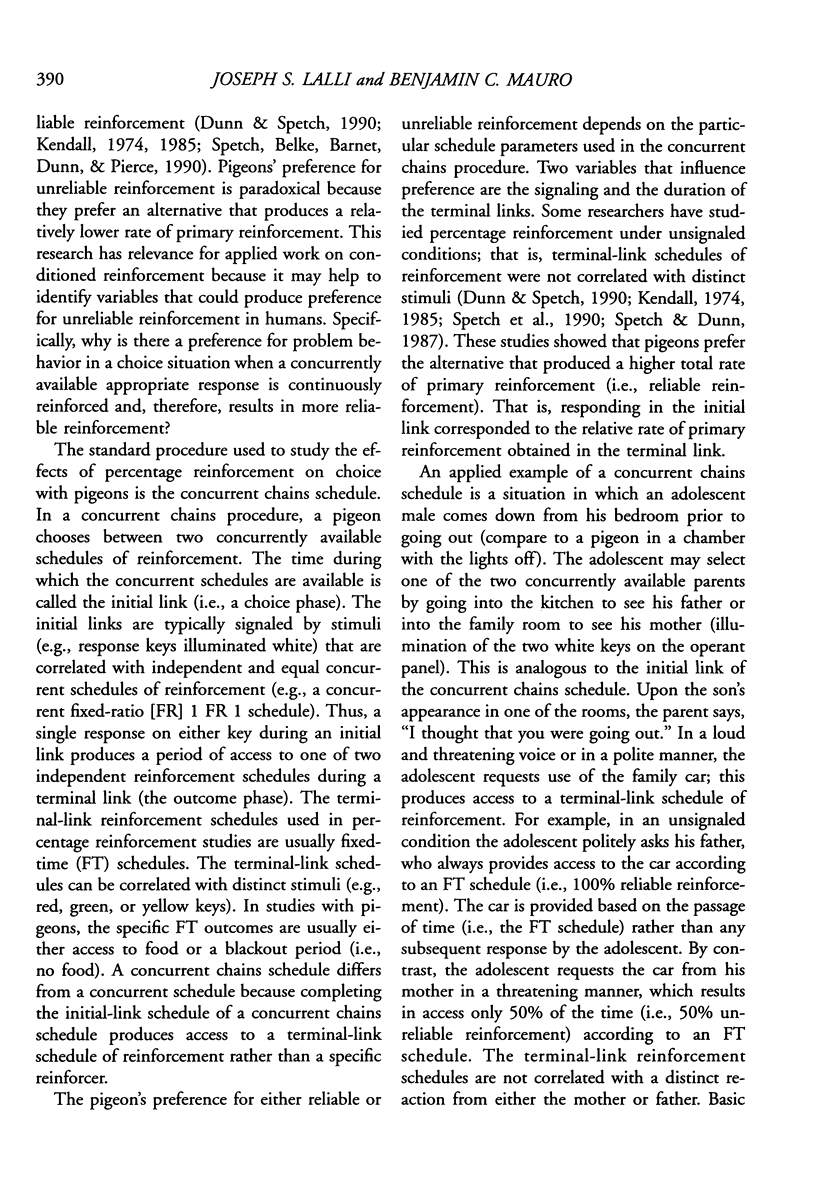
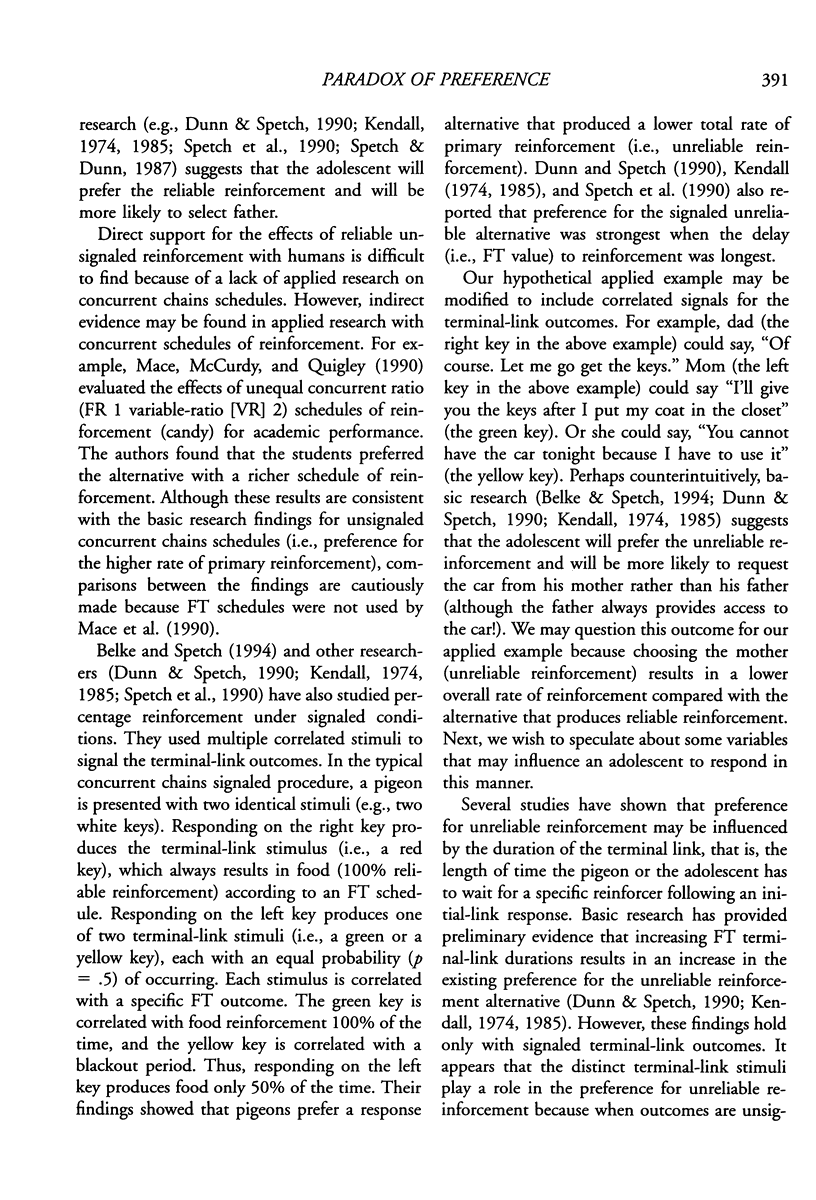
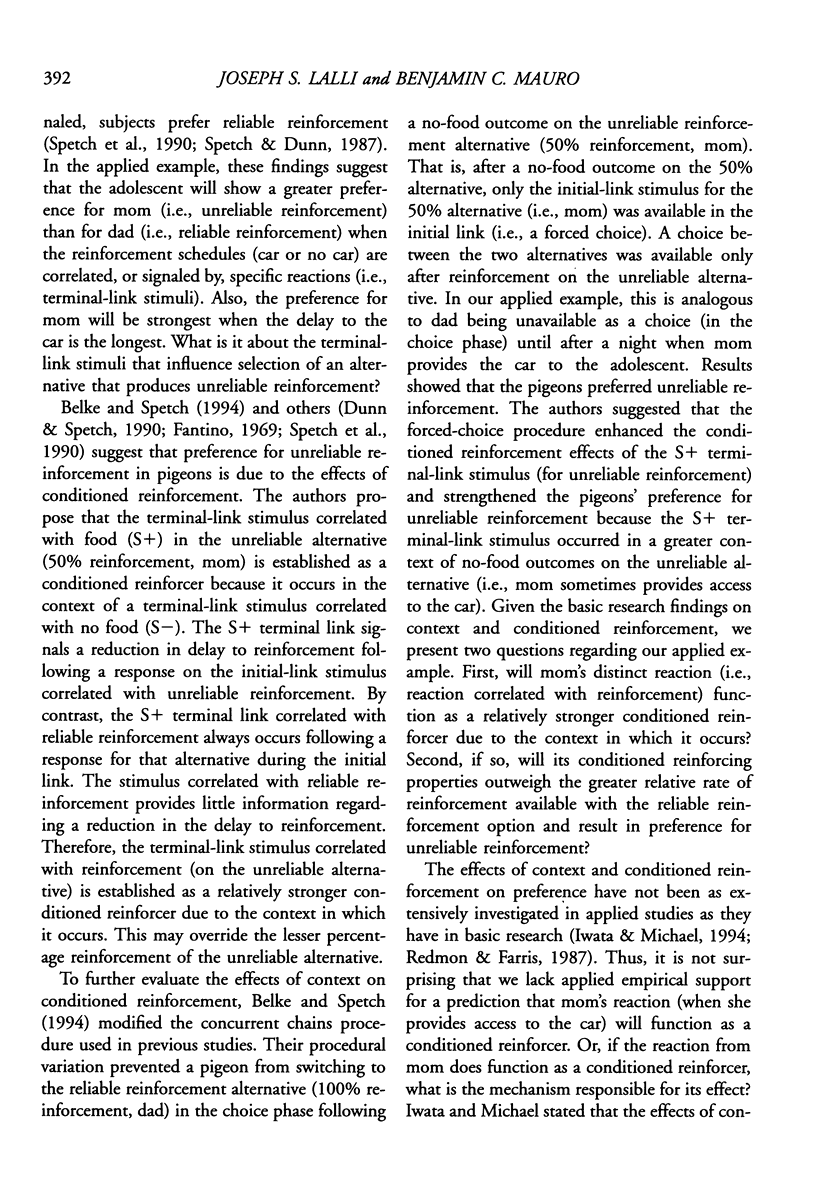
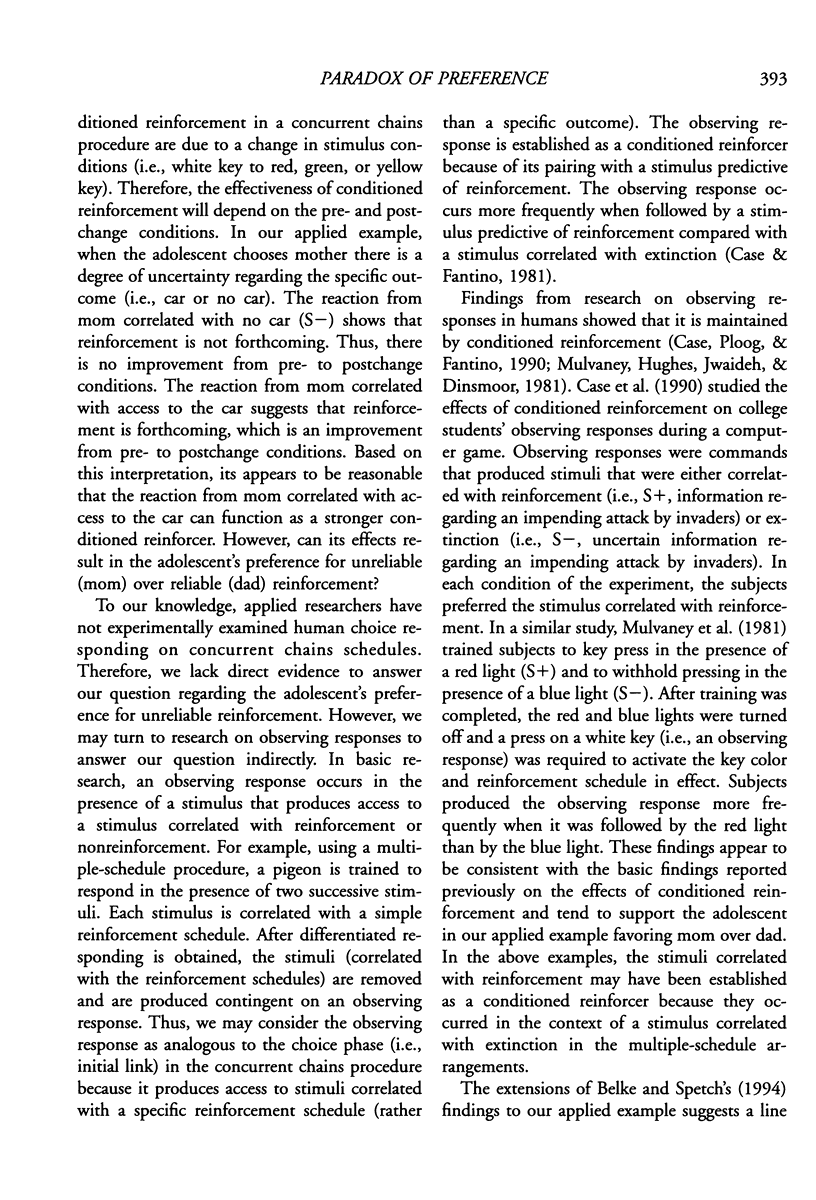
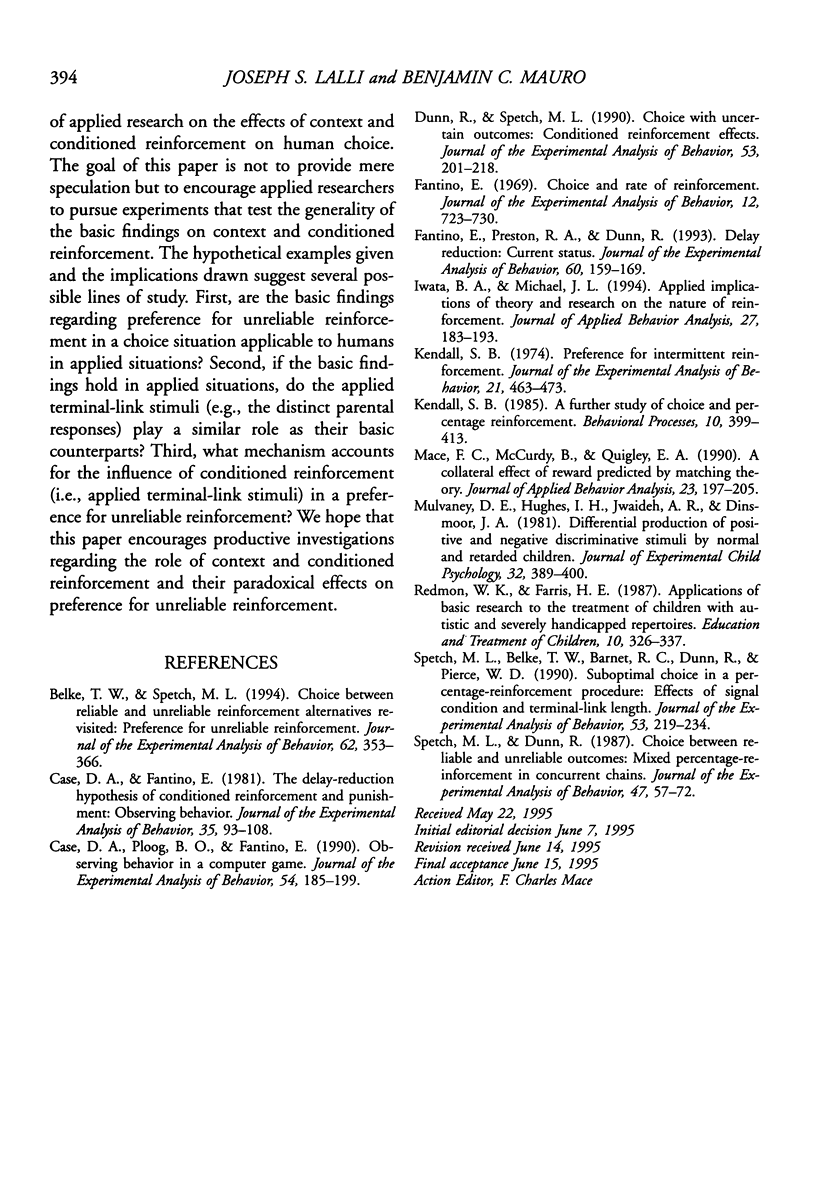
Selected References
These references are in PubMed. This may not be the complete list of references from this article.
- Belke T. W., Spetch M. L. Choice between reliable and unreliable reinforcement alternatives revisited: Preference for unreliable reinforcement. J Exp Anal Behav. 1994 Nov;62(3):353–366. doi: 10.1901/jeab.1994.62-353. [DOI] [PMC free article] [PubMed] [Google Scholar]
- Case D. A., Fantino E. The delay-reduction hypothesis of conditioned reinforcement and punishment: Observing behavior. J Exp Anal Behav. 1981 Jan;35(1):93–108. doi: 10.1901/jeab.1981.35-93. [DOI] [PMC free article] [PubMed] [Google Scholar]
- Case D. A., Ploog B. O., Fantino E. Observing behavior in a computer game. J Exp Anal Behav. 1990 Nov;54(3):185–199. doi: 10.1901/jeab.1990.54-185. [DOI] [PMC free article] [PubMed] [Google Scholar]
- Dunn R., Spetch M. L. Choice with uncertain outcomes: conditioned reinforcement effects. J Exp Anal Behav. 1990 Mar;53(2):201–218. doi: 10.1901/jeab.1990.53-201. [DOI] [PMC free article] [PubMed] [Google Scholar]
- Fantino E. Choice and rate of reinforcement. J Exp Anal Behav. 1969 Sep;12(5):723–730. doi: 10.1901/jeab.1969.12-723. [DOI] [PMC free article] [PubMed] [Google Scholar]
- Fantino E., Preston R. A., Dunn R. Delay reduction: current status. J Exp Anal Behav. 1993 Jul;60(1):159–169. doi: 10.1901/jeab.1993.60-159. [DOI] [PMC free article] [PubMed] [Google Scholar]
- Iwata B. A. Applied implications of theory and research on the nature of reinforcement. J Appl Behav Anal. 1994 Spring;27(1):183–193. doi: 10.1901/jaba.1994.27-183. [DOI] [PMC free article] [PubMed] [Google Scholar]
- Kendall S. B. Preference for intermittent reinforcement. J Exp Anal Behav. 1974 May;21(3):463–473. doi: 10.1901/jeab.1974.21-463. [DOI] [PMC free article] [PubMed] [Google Scholar]
- Mace F. C., McCurdy B., Quigley E. A. A collateral effect of reward predicted by matching theory. J Appl Behav Anal. 1990 Summer;23(2):197–205. doi: 10.1901/jaba.1990.23-197. [DOI] [PMC free article] [PubMed] [Google Scholar]
- Mulvaney D. E., Hughes L. H., Jwaideh A. R., Dinsmoor J. A. Differential production of positive and negative discriminative stimuli by normal and retarded children. J Exp Child Psychol. 1981 Dec;32(3):389–400. doi: 10.1016/0022-0965(81)90104-1. [DOI] [PubMed] [Google Scholar]
- Spetch M. L., Belke T. W., Barnet R. C., Dunn R., Pierce W. D. Suboptimal choice in a percentage-reinforcement procedure: effects of signal condition and terminal-link length. J Exp Anal Behav. 1990 Mar;53(2):219–234. doi: 10.1901/jeab.1990.53-219. [DOI] [PMC free article] [PubMed] [Google Scholar]
- Spetch M. L., Dunn R. Choice between reliable and unreliable outcomes: mixed percentage-reinforcement in concurrent chains. J Exp Anal Behav. 1987 Jan;47(1):57–72. doi: 10.1901/jeab.1987.47-57. [DOI] [PMC free article] [PubMed] [Google Scholar]


